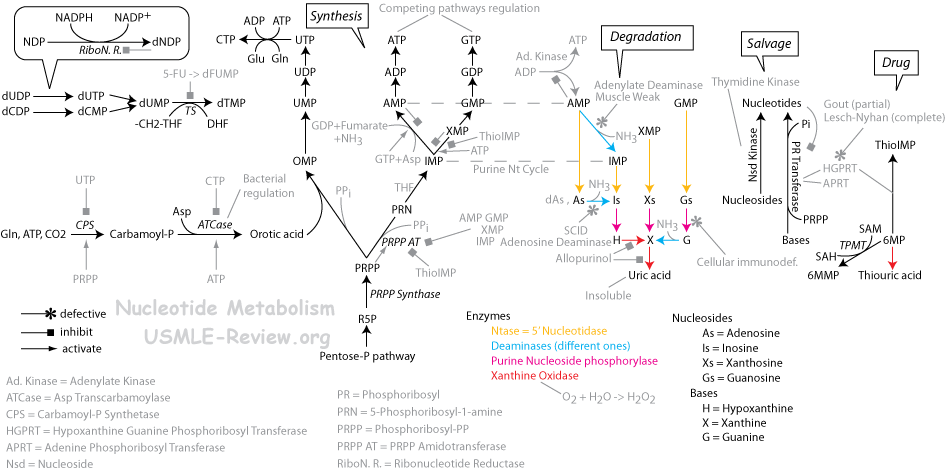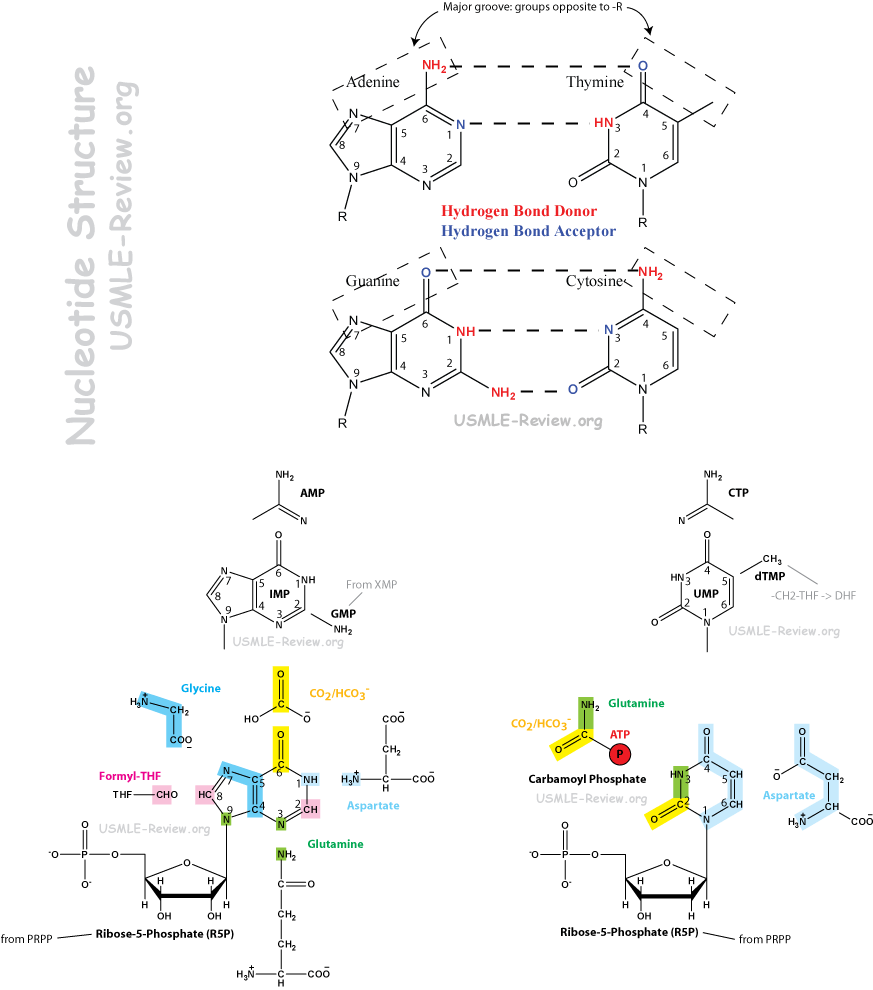|
|

Nucleotide structures

Enzymes / steps involved
- Orotic aciduria: defect in UMP synthesis pathway. Deficient in orotate phosphoribosyl transferase (converts orotate to OMP), or in OMP decarboxylase (converts orotidine-5-monophosphate to UMP). Lead to build up of orotate, which is found in urine. Causes retarted growth and severe anemia (not ammonemia, in contrast to OTC deficiency). Treat by administering uridine and/or cytidine. They get phosphorylated to for their respective NMP, NDP, and NTPs, which lead to feedback inhibition of pyrimidine biosynthesis pathway (inhibit first step: carbamoyl phosphate synthetase II)
- Thymidylate synthetase: dUMP → dTMP (methyl group transfered by THF)
- 5-Fluorouracil (5-FU) inhibits thymidylate synthetase.
- Methotrexate inhibits dihydrofolate (DHF) reductase (can't regenerate THF).
- Trimethoprim inhibits bacterial DHF reducase.
- NDP → dNDP catalyzed by Ribonucleotide Reductases (RNRs). Inhibited by hydroxyurea.
Purine degradation
- Purines are degraded to xanthine then to uric acid (xanthine oxidase).
- Adenosine deaminase deficiency: can't convert adenosine to inosine. Leads to imbalance of too much (d)ATP in nucleotide pool, inhibits DNA synthesis. Causes SCID.
- Uric acid is degraded to urea.
- Gout is caused by too much uric acid. Crystalizes and causes pain.
- HGPRT deficiency (Lesch-Nyhan syndrome) leads to too much PRPP, which lead to too much uric acid.
- G6Phosphatase deficiency (von Gierke's) leads to too much G6P, which lead to too much R5P, which leads to too much PRPP, and subsequently uric acid.
- Treat gout with allopurinol, which inhibits xanthine oxidase, blocking uric acid synthesis. The precursors xanthine and hypoxanthine are more soluble than uric acid.
|
|

